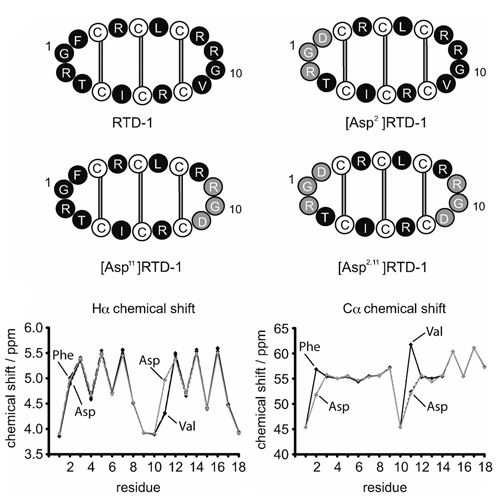The Cyclic Cystine Ladder of Theta-Defensins as a Stable, Bifunctional Scaffold: A Proof-of-Concept Study Using the Integrin-Binding RGD Motif.
02-Jan-2014
ChemBioChem, 2014, DOI: 10.1002/cbic.201300568, Volume 15, Issue 3, pages 451–459, published on 02.01.2014
ChemBioChem, online article
ChemBioChem, online article
Peptides have the specificity and size required to target the protein–protein interactions involved in many diseases. Some cyclic peptides have been utilised as scaffolds for peptide drugs because of their stability; however, other cyclic peptide scaffolds remain to be explored. θ-Defensins are cyclic peptides from mammals; they are characterised by a cyclic cystine ladder motif and have low haemolytic and cytotoxic activity. Here we demonstrate the potential of the cyclic cystine ladder as a scaffold for peptide drug design by introducing the integrin-binding Arg-Gly-Asp (RGD) motif into the θ-defensin RTD-1. The most active analogue had an IC50 of 18 nM for the αvβ3 integrin as well as high serum stability, thus demonstrating that a desired bioactivity can be imparted to the cyclic cystine ladder. This study highlights how θ-defensins can provide a stable and conformationally restrained scaffold for bioactive epitopes in a β-strand or turn conformation. Furthermore, the symmetry of the cyclic cystine ladder presents the opportunity to design peptides with dual bioactive epitopes to increase activity and specificity.











